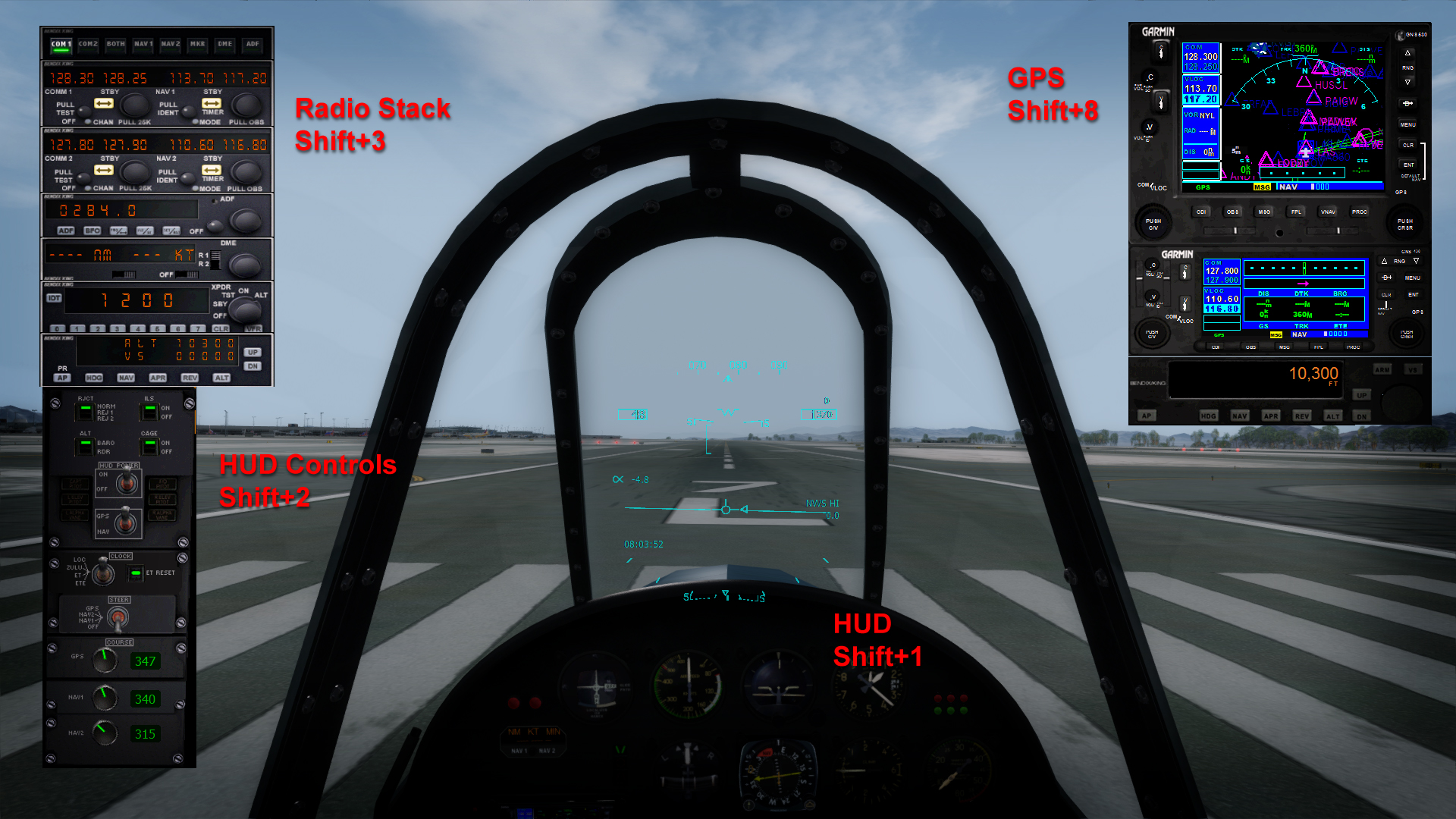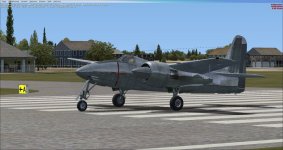General Testing Guidelines
Feel free to point out any and everything you see, either here, by PM or email. Many of the various artefacts, warts and bugs are already known, but many hands make quick work.
I'll catalog everything and start picking off the finer details.
What I am most interested in at this stage is the actual model, coding and performance. My priority at this time is that all of the switches, buttons, gauges and controls respond as intended.
Bear in mind that many of the switches are not live. The ones the respond to mouse roll over are the coded "live" switches and controls. If everyone is getting consistent response to pilot box switches, flaps, parking brake, trim etc., I can check those off as "good".
Performance:
This is an aggressive build that uses many 32bit textures, high poly definition and extensive modeling detail. That adds up in the aggregate, so I'm very interested in how the model performs on everyone's system.
If the 32 bit textures are too much, I can take those down to DXT5...much smaller, but they lose some of the very subtle painting details.
If the model is too demanding, I can streamline and economize the model. There is a lot of room there for optimization of individual parts if we need to start trimming. My philosophy is to aim for the sky, then tune as needed.
Instrumentation:
I want to thoroughly test instrumentation and navigation radios. All three models have full GPS capability, even the military version. The two civilian models have Garmin radios on the panel and available as pop up nav aids. The military version has only the pop up radios available. The panel remains accurate to the original airplane. I included the more modern radios for ease of navigation in the simulator.
Please do as much IFR and VFR flying as possible using the Garmin radios. I want to be sure everything integrates with the simulator. Check that your steam gauges are in synch with HUD and Garmin. ILS is working perfectly for me, but I would like feedback from you in this area.
Watch for accuracy of HSI, VOR and ADI working together with HUD.
Tips:
Make sure the airplane is dirty well in advance of glide slope intercept. If you hit the flaps and gear entering the beam, the autopilot may lose the track as it attempts to compensate trim as gear and flap drag comes in to play. Having the airplane on speed and trim prior to glide slope intercept is essential.
Enter the pattern at flaps one and around 160 indicated. The gear won't drop until you reach 150 indicated, then the HUD will go into pitch ladder mode. In the civilian version you will also have AOA on the panel.
In real world, ATC would bring you in much faster at a high traffic facility, so if you are re-creating those conditions you will need to anticipate energy bleed. This airplane is very slippery and doesn't slow down on a dime, therefore care needs to be taken when flying the pattern "hot". Hitting the beam at 185-200 indicated is do-able, but you may need to bleed energy once you are on the glide slope. I do this with prop pitch, power...then flaps...then finally gear. If you try to slam on the brakes you will probably bork the approach. lol
For carrier traps...just use the play book. Flaps, gear and hook on downwind @ 600'. You should be just below 150 indicated here, reduce to 125 turning base and inch throttle back to below 100 approaching the ball. Once you have the ball, slow to 90-95. Watch power here, the airplane will drop like a brick if you pull power to idle. If AOA and speed are on target, you can fly the airplane all the way to the wire. The airplane behaves well when you trap the wire...not a lot of flopping around.
HUD
The HUD is not accurate for to the time period, but is a great tool if you are going to shoot traps. The pitch ladder and other visual queues should give accurate readouts.
Here are the hot keys for the pop ups. These can be modified by the end user if they conflict with personal settings.











 When using CTRL + I there is no catapult preload action. Was it added yet? Right now I'd have to deck launch it.
When using CTRL + I there is no catapult preload action. Was it added yet? Right now I'd have to deck launch it. 








